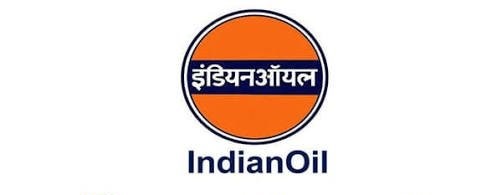Lanka IOC hikes fuel prices by Rs 5 per litre
Still we will not raise prices, he said.LIOC has been in operation in Lanka since 2002, and maintains over 200 retail fuel stations catering to about 12 per cent of the countrys fuel market.CPC has sought a USD 500 million credit line from India to pay for its crude oil purchases amid a severe foreign exchange crisis in the island nation.Energy minister Gammanpila had earlier warned that the current availability of fuel in the country can be guaranteed only till next January.The state oil distributors import crude from the Middle-East and refined products from countries such as Singapore.

- Country:
- Sri Lanka
Lanka IOC (LIOC), the subsidiary of the Indian Oil Corporation in Sri Lanka, has hiked the retail prices of both petrol and diesel by Rs 5 per liter in the wake of the rising global oil prices.
The hike came into effect from Thursday midnight, the company said. Accordingly, a liter of petrol now costs Rs 162 and diesel Rs 116.
The hike came days after the LIOC urged the government to allow them to increase the prices, although it has no obligation to ask the government in determining their retail prices.
LIOC Managing Director Manoj Gupta said last week though the retail price determination is at the company's discretion, it is consulting the Sri Lankan government due to the prevailing condition in the country.
The Lankan government, which is facing a severe foreign exchange crisis, has put on hold the expected retail price hike of fuel despite increasing the prices of cooking gas and other essentials.
LIOC's competitor, the state-run fuel distributor Ceylon Petroleum Corporation (CPC), is yet to take any decision on increasing the fuel prices, however, it has also urged the government to approve price hikes.
Gupta had said last week that the company was expecting an increase in petrol price by Rs 20/liter and diesel by Rs 30/liter.
He said the crude oil price in the international market now fluctuates between USD 83-94 per barrel from being around USD 65 four months ago. As a result, the LIOC has suffered huge losses.
Meanwhile, with the LIOC raising the fuel prices, people queued at the CPC-run petrol stations, however, most of them had put up 'no petrol' signboards, which motorists claim was caused by the anticipated government's decision to raise oil prices.
However, energy minister Udaya Gammanpila has ruled out increasing retail fuel prices.
"We have all the reasons to raise oil prices, the high cost of purchasing at the international market, the depreciation of the rupee, and the foreign exchange crisis we are faced with. Still, we will not raise prices," he said.
LIOC has been in operation in Lanka since 2002 and maintains over 200 retail fuel stations catering to about 12 percent of the country's fuel market.
CPC has sought a USD 500 million credit line from India to pay for its crude oil purchases amid a severe foreign exchange crisis in the island nation.
Energy minister Gammanpila had earlier warned that the current availability of fuel in the country can be guaranteed only till next January.
The state oil distributors import crude from the Middle East and refined products from countries such as Singapore. The price hike in the global oil prices has forced Lanka to spend more on oil imports this year.
Lanka's oil bill has jumped 41.5 percent to USD 2 billion in the first seven months of this year, compared to last year. The country is facing a severe foreign exchange crisis after the pandemic hit the nation's earnings from tourism and remittances, Finance Minister Basil Rajapaksa had said last month.
The country's Gross Domestic Product has contracted by a record 3.6 percent in 2020 and its foreign exchange reserves plunged by over a half in one year through July to just USD 2.8 billion.
This has led to a 9 percent depreciation of the Sri Lankan rupee against the US dollar over the past year, making imports more expensive.
(This story has not been edited by Devdiscourse staff and is auto-generated from a syndicated feed.)
ALSO READ
Merck and Singapore sign deal on COVID-19 antiviral pill
Ayushman Bharat excellent example of how digitalisation can help improve lives: Singapore FM
Indian-origin Singaporean out on bail jailed for public drunkenness
Singapore encouraged by recent moves by India that strengthen trade: FM Balakrishnan
Singapore, Netherlands marry nature and technology at Dubai Expo










